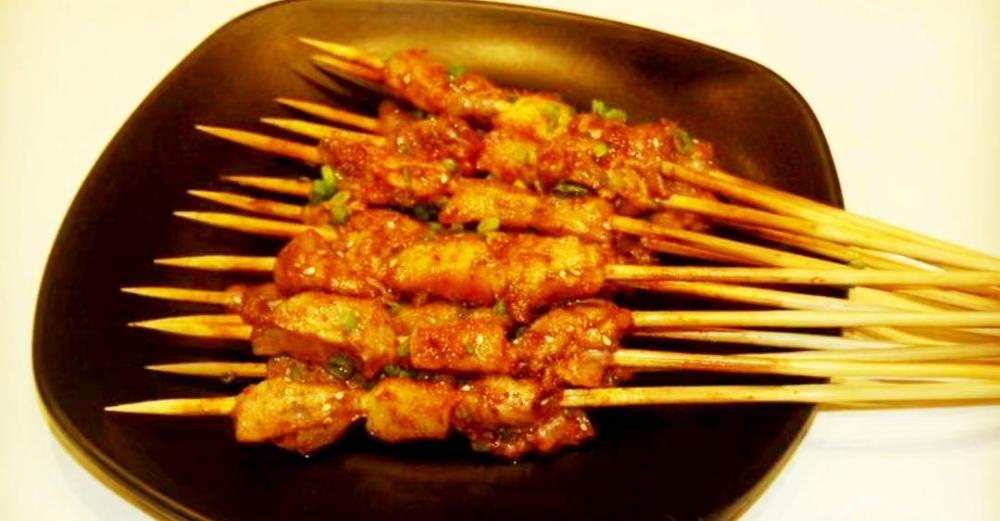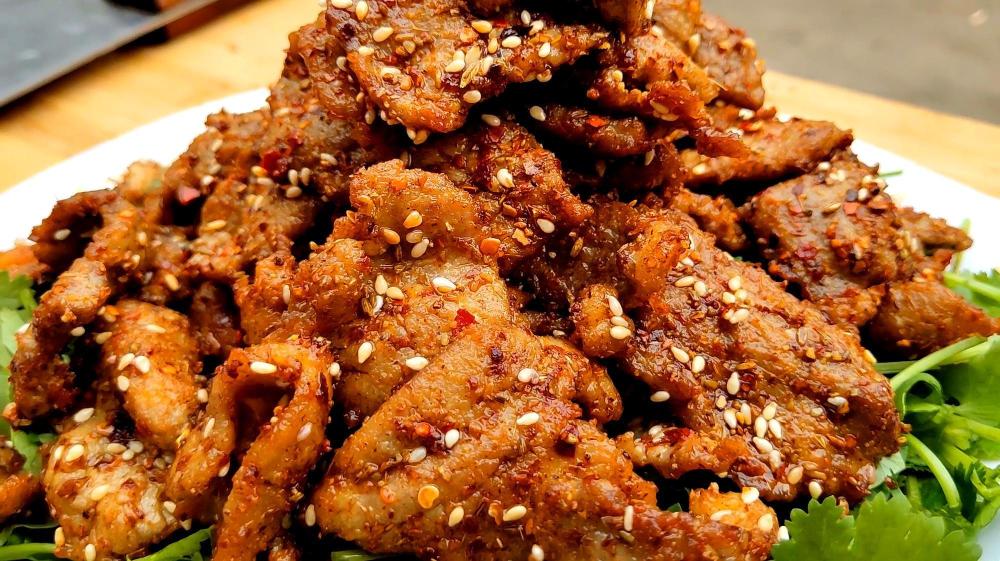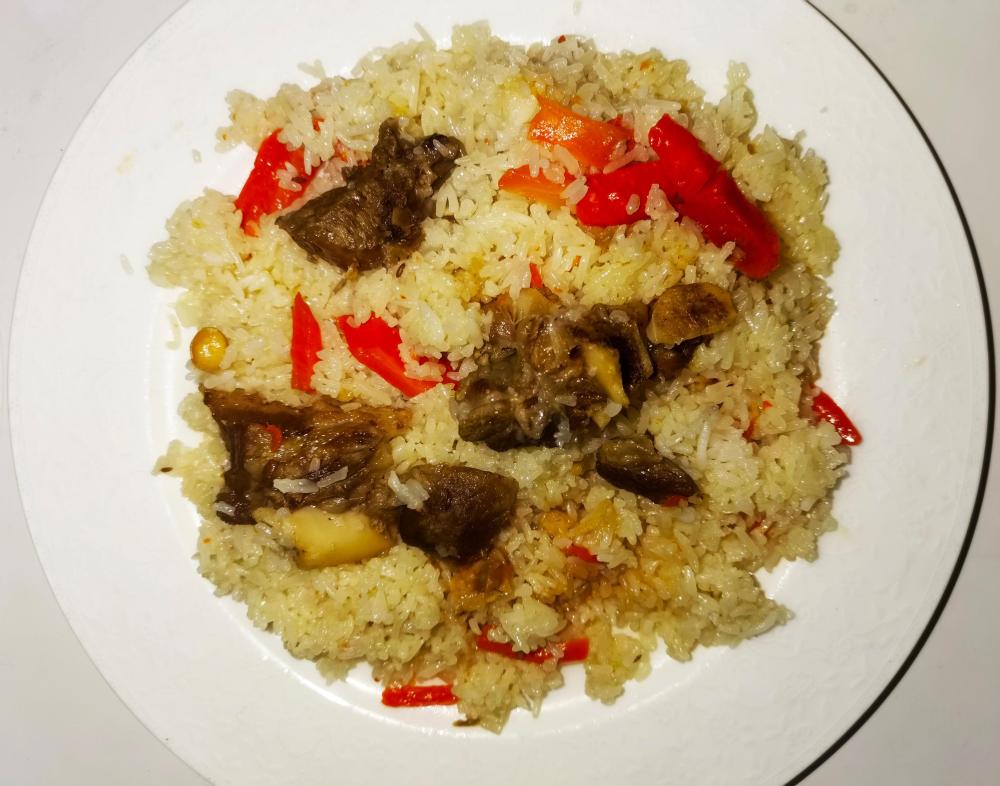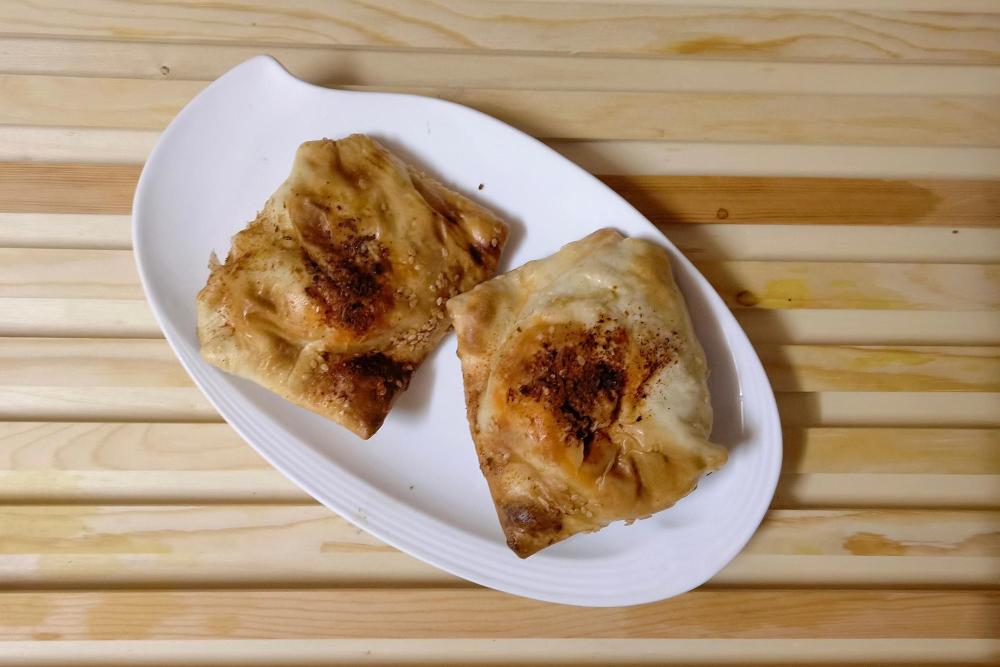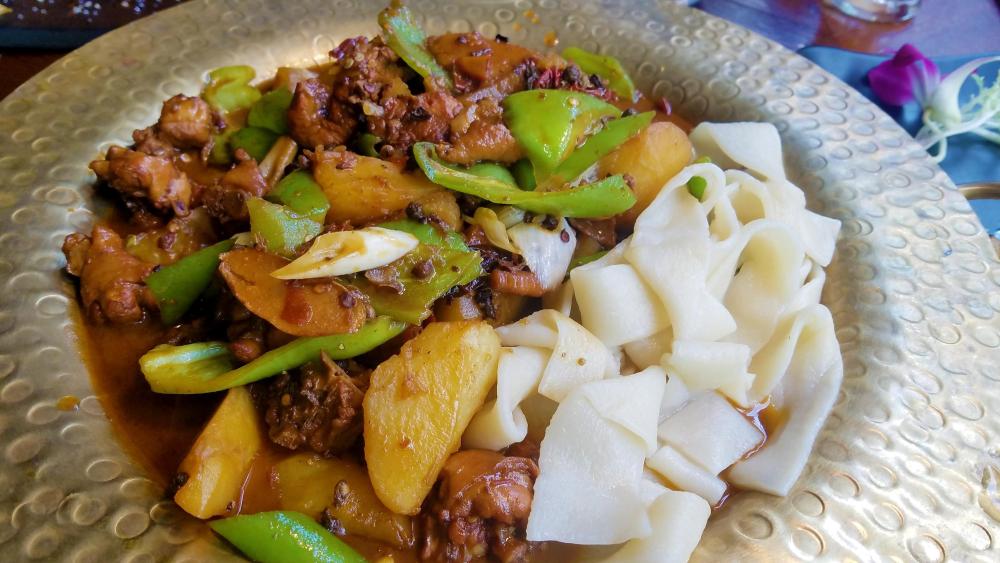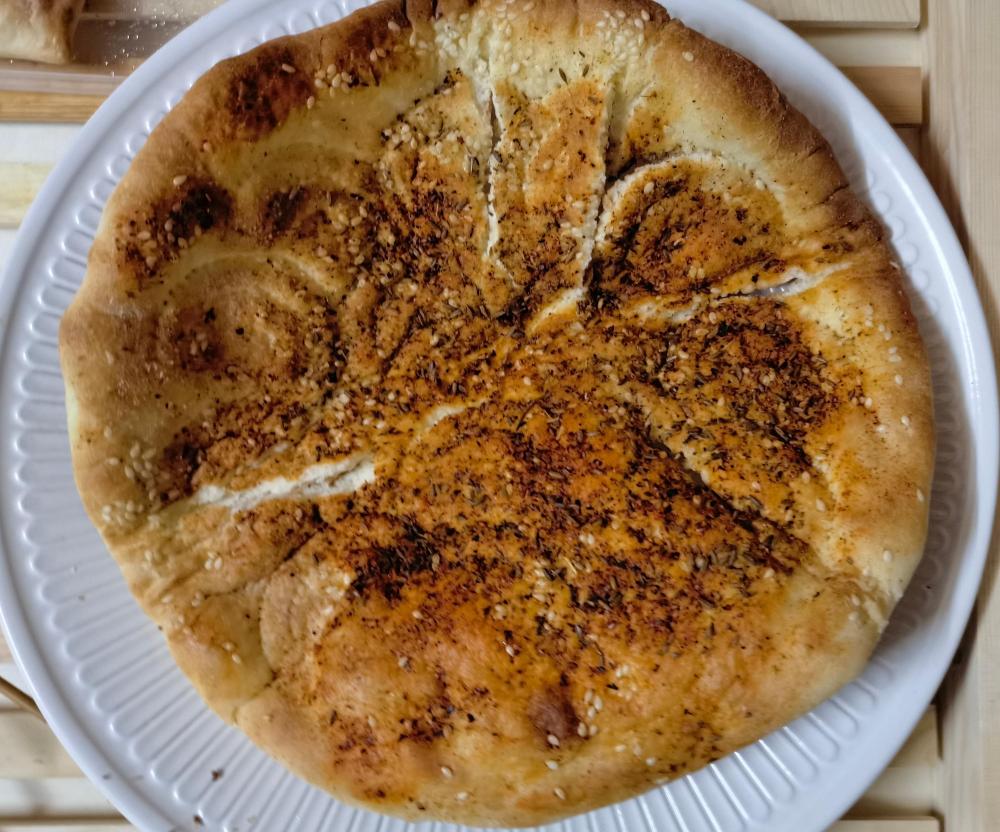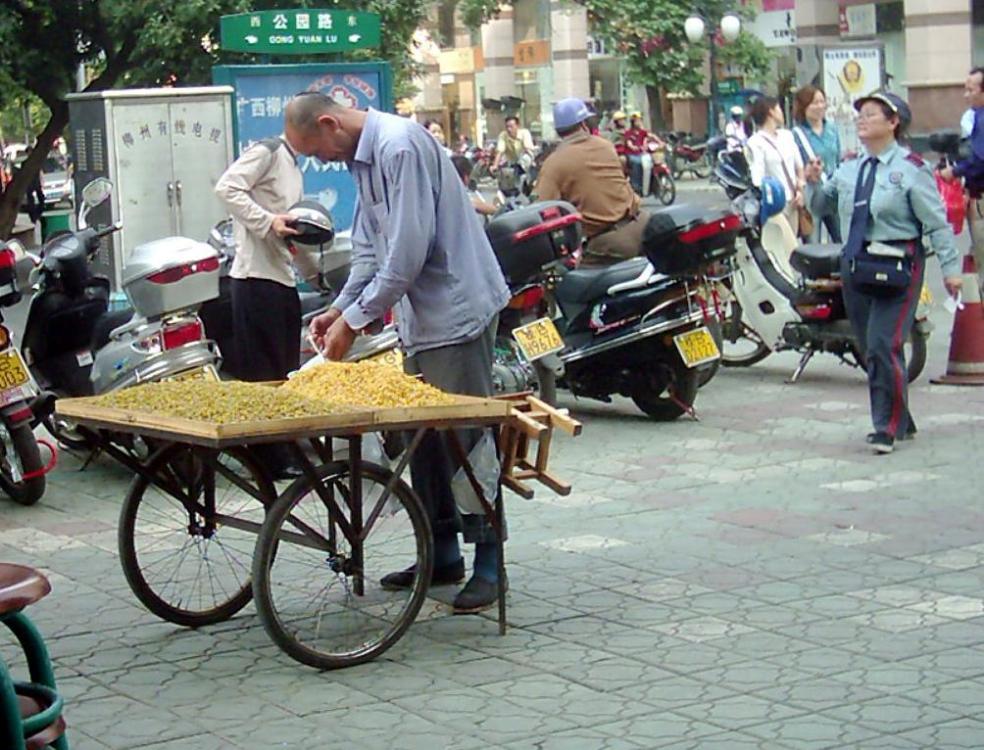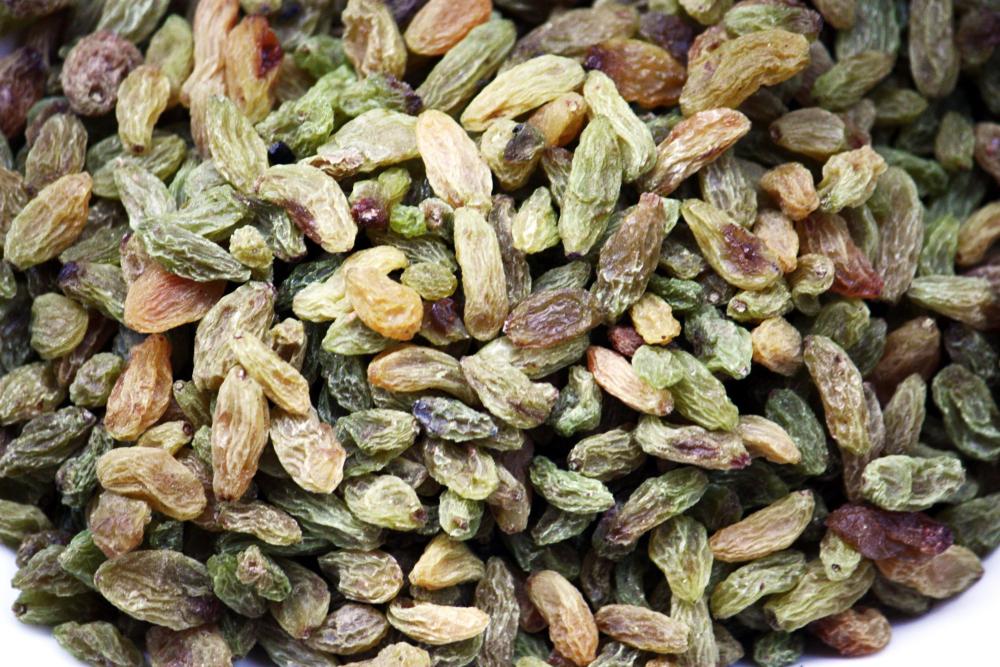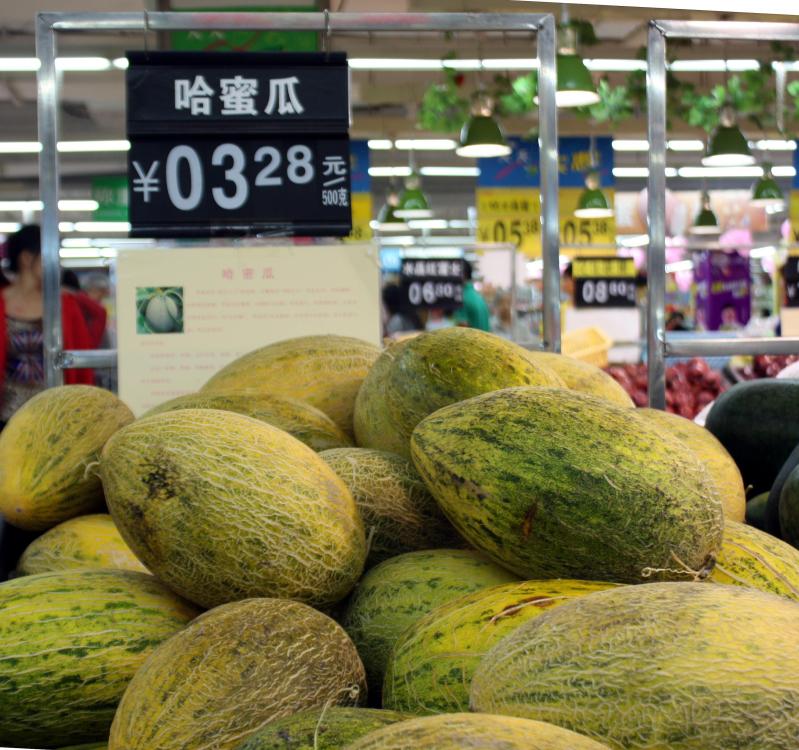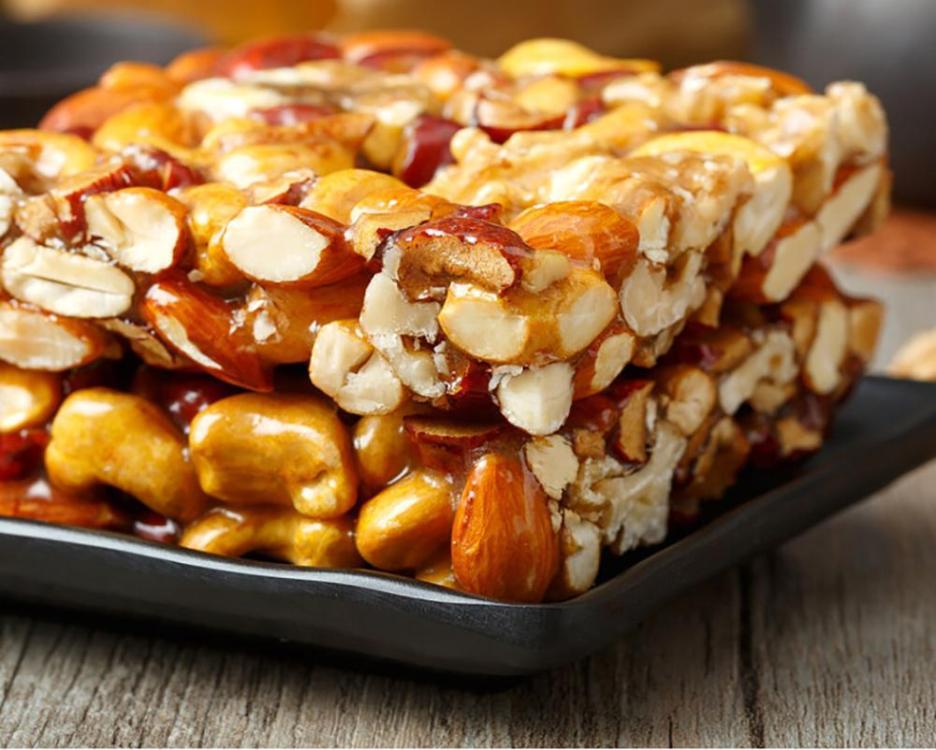新菜 (xīn cài) - Xinjiang (新疆) Cuisine
新疆维吾尔自治区 (xīn jiāng wéi wú ěr zì zhì qū), Xinjiang Uygur Autonomous Region is China’s westernmost region, bordering within China on Qinghai, Gansu and Tibet to its south-east and internationally bordering Mongolia to the north-east, a tiny part of Russia to the north, Kazakhstan, Kyrgyzstan, Tajikistan, Afghanistan, Pakistan and India to the west. Its capital is Ürümqi (Chinese: 乌鲁木齐 - wū lǔ mù qí). It is China’s largest administrative region.
Its autonomous region status is by virtue of its large population of Uygur (also spelled Uighur), Chinese: 维吾尔 (wéi wú ěr), Muslim ethnic minority people. Its real autonomy is virtually zero. The Uygur are a Turkic people and their language and culture is much closer to Turkish than to Chinese. Their food is strongly influenced by Turkic cuisine, too and especially by its immediate neighbours, especially the ‘-stans’.
Xinjiang, literally means ‘new border’ and has been part of China since 1884 during the Qing dynasty. Its historic name is East Turkistan, although that name has been denied them by the communist regime. It remains a troubled region. There are tensions between the ethnic minorities and the many Han Chinese immigrants, especially in recent years. But I’m not getting into the politics here.
Its food, despite being far from what most people consider to be Chinese cuisine, is very popular across China, today. Xinjiang was a major part of the Silk Road linking China to the west and that brought spices and techniques from the west, but it also absorbed influences from its eastern neighbours in China while still retaining its own unique identity. Although ‘regular’ Chinese food is widely available there now, I intend to focus more on the native ethnic minorities’ cuisine
For religious regions, they do not eat pork; instead lamb/mutton is their main protein, supplemented by beef, horse and chicken. Much of the food is halal. Saltwater fish is far, far away, so what fish etc there is is mostly freshwater. Whereas the Chinese use chopsticks for most of their eating, in Xinjiang it’s hands.
The Xinjiang food most widely found around China is certainly 羊肉串 (yáng ròu chuàn), or in Beijing dialect 羊肉串儿 (yáng ròu chuàn ér), exactly the same thing. These are fatty lamb cubes on sticks, grilled over charcoal and spiced with Xinjiang’s favourite spice, cumin and chilli along with other spices. All over Xinjiang and in every city I’ve visited in China, night markets have the Xinjiang kebab people, mostly street food but also available in many restaurants. And they are damned delicious. Cubes of fat, ideally from the sheep’s tail, are interspersed with lean lamb; the fat renders flavouring the meat. Sold by the stick in the streets. I ate them nearly evening in Xi’an, outside North-West University. Excellent beer food. I must have eaten thousands of them in the year I lived there. I still eat them here, around 3,000 km/1,864 miles from Xinjiang.
Lamb Skewers
Another lamb favourite is 孜然羊肉 (zī rán yáng ròu), Cumin lamb, a simple dish of fried lamb flavoured with whole toasted cumin seeds, chilli peppers, and coriander leaf/cilantro. It is similar to the kebabs above, but stir fried rather than grilled and is flavoured with soy sauce and Shaoxing wine.
Cumin Lamb
Also popular is 羊肉抓饭 (yáng ròu zhuā fàn). In Uygur language, this is known as polo and is a form of pilaf or pilao and is rice flavoured with cumin, onions, carrots and lamb. In some versions it is sweetened with raisins. The Chinese name means ‘hand-grasped mutton rice’, referring to it traditionally being eaten using the hands. It is usually served as a lunch dish.
Polo
Before leaving lamb behind, I should mention that a good Xinjiang snack food is 烤包子 (kǎo bāo zi). These are bao buns containing lamb but instead of being steamed in the usual Chinese manner, are fried or grilled.
Roasted Bao Buns
The most famous Xinjiang chicken dish has been mentioned here several times in the past. 大盘鸡 (dà pán jī), literally ‘big plate chicken’. Many of visitors assume that they are eating some ancient, traditional Muslim dish but they are wrong. The most widely accepted story of its origin is that the dish was invented in the north Xinjiang county of Shawan (沙湾县 - shā wān xiàn) in the early 1990s by an immigrant named Li Shilin from Sichuan who was trying to recreate his home town flavours, but using locally available chicken and potatoes. The inclusion of Sichuan peppercorns in nearly all recipes supports this theory as Sichuan peppercorns are not otherwise part of Xinjiang cuisine. I remember being introduced to it in Xi'an in 1997, when it was described as a 'new dish'. The dish caught on in its birthplace, then spread out along what was the Silk Road to Xi'an, then all over China. Some say it was aided in this by its popularity with long distance truck drivers.
Warning: When they ‘big’, they mean BIG. A normal serving is easily enough for four to five hungry people and, if they get through that, they will be served extra noodles to ‘soak up the juices’. Most restaurants offer a smaller version, which is what a friend and I normally share. It, too is more than enough.
Big Plate Chicken
Alternatively, instead of the noodles, some restaurants serve Xinjiang’s famous bread - 馕 (náng). Linguistically related to naan bread, this usually circular bread made from a fermeted dough, is often flavoured with, you guessed, cumin and chilli and there is a saying "One can go without eating meat for three days, but can't live one day without nang".
Nang Bread
Xinjiang is also famous for its fruit, especially 哈密瓜 (hā mì guā), Hami melon, a sweet type of large musk melon. These are ‘exported’ all over China and are highly prized. Dried fruits, especially raisins are sold on the streets of many Chinese cities by travelling vendors. This man turned up here every summer until he retired and sent his son instead.
Xinjiang Raisin Seller
and his dried grapes
Hami Melons
Also, sold on the street from carts or tricycles is 新疆切糕 (xīn jiāng qiē gāo), a type of cake made from nuts, glutinous rice, dried fruit and melon seeds. I always buy this when I see it. The main nuts used are walnuts and peanuts (technically not a nut).
Here, I can only give a brief introduction but I hope it gives an idea of the very different foods and flavours from this part of China. Why it wasn’t included in the list of eight cuisines I started from, I have no idea. It is one of the best and enjoyed everywhere.
Next? Another very different Chinese cuisine.


